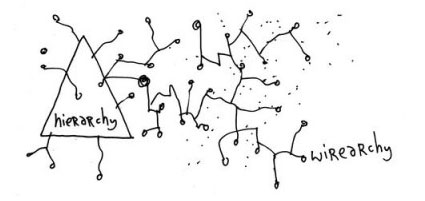In the second part of a series on social learning, The Internet Time Alliance discuss the role of trust in social learning and the how it fits in with other types of more traditional learning.
Analysing social learning
Most 20th Century workplaces had two types of learning: formal learning through training, and informal learning (about 80% according to research) which just happened by accident or the result of observation, conversation and time in the job. This focus on formal training, for skills and knowledge, missed out on our social nature. Business has always been social, especially at the higher levels of management and with ubiquitous access to networks; this is once again part of everyone’s work. In the global village, we are all interconnected.
Making social learning work: The role of trust
Trust is vital in everything we do. Not only in learning but also in the way our organisations work. The profound changes that are occurring in organisational operation are well described in Jon Husband’s ‘Wirearchy‘.
Jon’s working definition of ‘Wirearchy’ is "a dynamic two-way flow of power and authority, based on knowledge, trust, credibility and a focus on results, enabled by interconnected people and technology".
We are seeing increasing examples of this on the edges of the modern enterprise. World Blu’s annual listing of our most democratic workplaces continues to grow and gain attention. Google’s dedicated time-off for private projects, given to its engineers, promotes non-directed learning and collaboration. Zappos directly engages with its customers on Twitter, fostering higher levels of two-way trust. As customers, suppliers and competitors become more networked, being more wirearchical will be a business imperative.
Wirearchies inherently require trust, and trusted relationships are powerful allies in getting things done in organisations. Trust is also an essential component of social learning. Just because we have the technical networks does not mean that learning will automatically happen. Communications without trust are just noise, not accepted and never internalised by the recipients.

Here are some ways to make social learning work in the enterprise:
- Think and act at a macro level (what to do) and leave the micro (how to do it) to each worker or team. The little stuff is changing too fast
- Engage with web media and understand how they work. The web is too important to be left to the IT department, communications staff or outside vendors
- Use social media to make work easier or more effective. Use them to solve problems for work teams and groups
- Make traditional management obsolete. Teach people ‘how to fish’ and move on to the next challenge. If the organisation is maintaining a steady state then it has failed to evolve with the environment.
Five types of learning: Where social learning fits
Jane Hart has shown how social media can be used for workplace learning. She has defined five types of learning that should be supported by any organisation:
- IOL – Intra-Organisational Learning: keeping the organisation up to date and up to speed on strategic and other internal initiatives and activities
- GDL – Group Directed Learning: groups of individuals working in teams, projects, study groups, etc. Even two people working together in a coaching and mentoring capacity
- PDL – Personal Directed Learning: individuals organising and managing their own personal or professional learning
- ASL – Accidental and Serendipitous Learning: individuals learning without consciously realising it (a.k.a incidental or random learning)
- FSL – Formal Structured Learning: formal education and training like classes, courses, workshops, etc. (both synchronous and asynchronous)
If you reflect on these five categories you’ll notice that traditional structured training (FSL) is only one of the five types. Three of the types (IOL, GDL, PDF) require self-direction, and that is the essence of social learning: becoming self-directed learners and workers, all within a two-way flow of power and authority. Social and informal learning are not just feel-good notions, but have a real impact on an increasingly intangible business environment.
Jay Cross has also looked at the ways that social learning is becoming real and developed this table to highlight some of the workplace changes he is observing:
|
Social learning gets real
|
|
|
Past
|
Future
|
|
Subject matter experts
|
Subject matter networks
|
|
Need to know
|
Need to share
|
|
Curriculum
|
Competency
|
|
Clockwork, predictable
|
Complexity, surprising
|
|
Stocks
|
Flow
|
|
Clock time
|
Time-to-accomplishment
|
|
Worker-centric
|
Team-centric
|
|
Jay Cross, November 2009
|
|
Few of these changes may be taking place in your organisation now, but the evidence is that they will occur in the near future and they will need to be supported by ‘savvy’ learning and development practitioners using social learning approaches.
We will address some practical approaches to doing this in the next parts of this series.
This is part 2 of a four-part series of articles on the September theme of social learning. The series has been authored by members of the Internet Time Alliance (ITA) and other colleagues. ITA members are Jay Cross, Jane Hart, Jon Husband, Harold Jarche, Charles Jennings and Clark Quinn.
Previous articles:
A framework for social learning in enterprise: Part 1
In the second part of a series on social learning, The Internet Time Alliance discuss the role of trust in social learning and the how it fits in with other types of more traditional learning.
Analysing social learning
Most 20th Century workplaces had two types of learning: formal learning through training, and informal learning (about 80% according to research) which just happened by accident or the result of observation, conversation and time in the job. This focus on formal training, for skills and knowledge, missed out on our social nature. Business has always been social, especially at the higher levels of management and with ubiquitous access to networks; this is once again part of everyone's work. In the global village, we are all interconnected.
Making social learning work: The role of trust
Trust is vital in everything we do. Not only in learning but also in the way our organisations work. The profound changes that are occurring in organisational operation are well described in Jon Husband's 'Wirearchy'.
Jon's working definition of 'Wirearchy' is "a dynamic two-way flow of power and authority, based on knowledge, trust, credibility and a focus on results, enabled by interconnected people and technology".
We are seeing increasing examples of this on the edges of the modern enterprise. World Blu's annual listing of our most democratic workplaces continues to grow and gain attention. Google's dedicated time-off for private projects, given to its engineers, promotes non-directed learning and collaboration. Zappos directly engages with its customers on Twitter, fostering higher levels of two-way trust. As customers, suppliers and competitors become more networked, being more wirearchical will be a business imperative.
Wirearchies inherently require trust, and trusted relationships are powerful allies in getting things done in organisations. Trust is also an essential component of social learning. Just because we have the technical networks does not mean that learning will automatically happen. Communications without trust are just noise, not accepted and never internalised by the recipients.

Here are some ways to make social learning work in the enterprise:
- Think and act at a macro level (what to do) and leave the micro (how to do it) to each worker or team. The little stuff is changing too fast
- Engage with web media and understand how they work. The web is too important to be left to the IT department, communications staff or outside vendors
- Use social media to make work easier or more effective. Use them to solve problems for work teams and groups
- Make traditional management obsolete. Teach people 'how to fish' and move on to the next challenge. If the organisation is maintaining a steady state then it has failed to evolve with the environment.
Five types of learning: Where social learning fits
Jane Hart has shown how social media can be used for workplace learning. She has defined five types of learning that should be supported by any organisation:
- IOL – Intra-Organisational Learning: keeping the organisation up to date and up to speed on strategic and other internal initiatives and activities
- GDL – Group Directed Learning: groups of individuals working in teams, projects, study groups, etc. Even two people working together in a coaching and mentoring capacity
- PDL – Personal Directed Learning: individuals organising and managing their own personal or professional learning
- ASL – Accidental and Serendipitous Learning: individuals learning without consciously realising it (a.k.a incidental or random learning)
- FSL – Formal Structured Learning: formal education and training like classes, courses, workshops, etc. (both synchronous and asynchronous)
If you reflect on these five categories you'll notice that traditional structured training (FSL) is only one of the five types. Three of the types (IOL, GDL, PDF) require self-direction, and that is the essence of social learning: becoming self-directed learners and workers, all within a two-way flow of power and authority. Social and informal learning are not just feel-good notions, but have a real impact on an increasingly intangible business environment.
Jay Cross has also looked at the ways that social learning is becoming real and developed this table to highlight some of the workplace changes he is observing:
Social learning gets real | |
Past | Future |
Subject matter experts | Subject matter networks |
Need to know | Need to share |
Curriculum | Competency |
Clockwork, predictable | Complexity, surprising |
Stocks | Flow |
Clock time | Time-to-accomplishment |
Worker-centric | Team-centric |
Jay Cross, November 2009 | |
Few of these changes may be taking place in your organisation now, but the evidence is that they will occur in the near future and they will need to be supported by 'savvy' learning and development practitioners using social learning approaches.
We will address some practical approaches to doing this in the next parts of this series.
This is part 2 of a four-part series of articles on the September theme of social learning. The series has been authored by members of the Internet Time Alliance (ITA) and other colleagues. ITA members are Jay Cross, Jane Hart, Jon Husband, Harold Jarche, Charles Jennings and Clark Quinn.
Previous articles:
A framework for social learning in enterprise: Part 1








